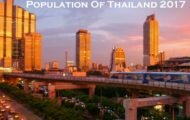Pakistan, officially the Islamic Republic of Pakistan, is a federal parliamentary republic in South Asia. It is the sixth-most populous country in the world with an area of 881,913 km2 (340,509 sq mi) that makes it the 36th largest country in the world in terms of area. Pakistan has a 1,046-kilometre coastline along the Arabian Sea and the Gulf of Oman in the south and is bordered by India to the east, Afghanistan to the west, Iran to the southwest and China in the far northeast respectively.

Pakistan is unique among Muslim countries as it is the only country to have been created in the name of Islam. Pakistan was created in 1947 as an independent nation for Muslims on the movement started by Mohd. Ali Jinnah, from the regions in the east and west of the Subcontinent where there was a Muslim majority. Initially a dominion, Pakistan adopted a new constitution in 1956, becoming an Islamic republic. A civil war in 1971 resulted in the secession of East Pakistan as the new country of Bangladesh. Pakistan has the seventh largest army force in the world and only Muslim country to have achieved the status of an official Nuclear power state.
POPULATION OF PAKISTAN IN 2017:
Talking about population, in order to check out the population of Pakistan in 2017, we need to have a look at the population of the past 5 years. They are as per the following:
- 2012 – 179.2 million
- 2013 – 182.1 million
- 2014 – 185.09 million
- 2015 – 188.92 million
- 2016 – 190.91 million
Pakistan Population 2017 – 196.17 million(Estimated)
As of 1 January 2016, the population of Pakistan was estimated to be 190 916 866 people. This is an increase of 2.10 % (3 932 286 people) compared to population of 186 984 580 the year before. In 2015 the natural increase was positive, as the number of births exceeded the number of deaths by 4 158 537. Due to external migration, the population declined by 226 251.
The estimated population of Pakistan in 2017 has been put to 196.17 million.
Back in 2001, the estimated population was around 142.5 million; the country, at that point, became the seventh most populated country in the entire world. Over the next ten years, the estimated population grew by about 34 million people. Today, the estimated Pakistan population is approximately 185.1 million, making it the sixth most populous country. Since 1947, when Pakistan gained a sovereign state status, more population moved to the area and made the growth rate at 2.1 % and It is predicted that in about 35 years, if this growth continues, the population of Pakistan will eventually become double of what it was back in 2001.
During 2016 Pakistan population is projected to increase by 4 014 982 people and reach 194 931 848 in the beginning of 2017 and also if the external migration will remain on the previous year level, the population will be declined by 231 009 due to the migration reasons.
According to our estimations, daily change rates of Pakistan population in 2016 will be the following:
15 566 live births average per day
3 933 deaths average per day (163.89 in a hour)
-633 emigrants average per day (-26.37 in a hour)
The population of Pakistan will be increased by 11 000 persons daily in 2016.
DEMOGRAPHY OF PAKISTAN:
The Punjabi population of Pakistan is the largest ethnic group which makes it upto 74.69% of the total population, Pashtuns make up the second largest group and Sindhi are the third-largest ethnic group. Saraikis (a transitional group between Punjabis and Sindhis) make up 10.53% of the total population.The remaining large groups include the Muhajirs and the Baloch people, which make up 7.57% and 3.57% of the total population, respectively. Hindkowans and the Brahui, and the various peoples of the Gilgit–Baltistan, constitute roughly 4.66% of the total population.
Apart from the ethnic division, the age statistics are like :
Under 15 years of age- 67 638 027
Between 15 and 64 years- 115 229 784
Above 64 years- 8 049 055
The total dependency ratio of population in Pakistan is 65.7 %.
Child dependency ratio is a ratio of people below working age (under 15) to workforce of a country and the ratio is 58.7% in Pakistan.
Aged dependency ratio is a ratio of people above working age (65+) to workforce of a country that accounts to 7% in Pakistan.
Total life expectancy (both sexes) at birth for Pakistan is 66 years.
According to our estimates 72 430 927 persons or 58.75% of adult population (aged 15 years and above) in Pakistan are able to read and write.
38.6 % of the population is urban (74,986,621 people in 2016)
The median age in Pakistan is 22.7 years.
POPULATION DENSITY AND GROWTH RATE IN PAKISTAN:
Pakistan population density is 239.8 people per square kilometer as of November 2016. Density of population is calculated as permanently settled population of Pakistan divided by total area of the country. Total area is the sum of land and water areas within international boundaries and coastlines of Pakistan. The total area of Pakistan is 796 100 km2 according to the United Nations Statistics Division.
The population of Pakistan grew, on average, at a rate of 3 percent per year from 1951 until the middle of the 1980’s decade. From the mid 1980’s until the year 2000, the growth of the population slowed down to about 2.6 percent per year; and from 2000 to 2012, to about 2 percent per year. The reason for this slow population increase may be that the country spent a lot of time and effort to slow down the population growth. As a result of these efforts, it is a lot poorer than what is was a long time ago. If it did not make any effort to slow down its population increase, then there would actually be 49.13 million MORE people in the country than the current reports.
FACTS ABOUT PAKISTAN:
1. Originally, independence officially occurred at midnight on the night of August 14-15. So formally, August 15 was celebrated as Independence Day.
2. A baby is born in Pakistan every seven seconds.
3. This year Pakistan set a world record for the most saplings planted in a day, with an impressive 750,000 mangrove tree saplings.
4. In 2010, Pakistani cricketers involved in a betting scam were urged to regain respect by taking part in an advert for dog and cat neutering.
5. Pakistan is the world’s second-largest producer of chickpeas behind India.
6. Gwadar port in Pakistan is the largest deep sea port in the world, located at the South Western Arabian Sea, along the coast line of Balochistan, Pakistan.
7. Pakistan became the first Islamic country to become a nuclear power on 28th May 1998.



